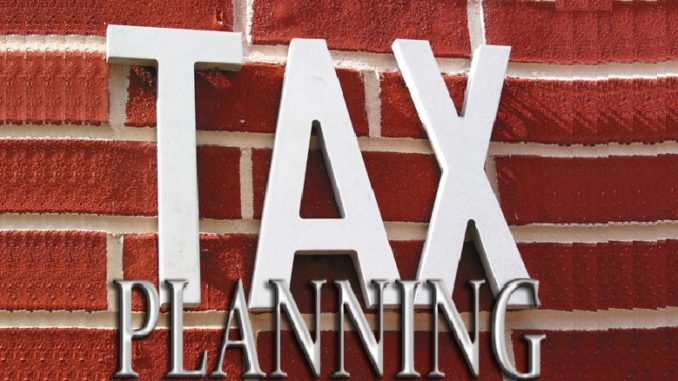
Are you looking to save some tax? Your first port of call should be Section 80C of the Income Tax Act. Section 80C provides for deduction from Gross Total Income for certain eligible investments and payments. Key points to note:
- Applicable only for Individuals and Hindu Undivided Family (HUF).
- Actual payment should have been made to claim Section 80C deduction. Additionally the payment should be made from taxable income of the year in which deduction is being claimed.
- Maximum deduction under Section 80C is Rs 150,000. Kindly note that limit has been enhanced from Rs 100,000 to Rs 150,000 vide Union Budget 2014. Deduction can be claimed for any of the payment or investment. There is no sub-limit for any of the available options.
- Section 80C replaces the erstwhile Section 88 with more or less the same investment mix available in Section 88 but with a major change in the method of providing a tax benefit. While Section 88 provided for Rebate on Income Tax payable, Section 80C provides for deduction from the Gross Total Income.
Eligible Investment / Payment under Section 80C
Employee Provident Fund (EPF): Salaried individuals are compulsorily required to contribute minimum 12% of the Basic Salary to EPF. This amount is deducted from monthly payroll. Employer is also required to make a matching contribution towards Employees retirement kitty. Employer has to contribute 8.33% of Basic Salary towards Employee Pension Scheme (EPS) and balance 3.67% towards EPF (for the purpose of Employer contribution to EPS, basic Salary is restricted to maximum Rs 6500 per month, i.e. maximum contribution to EPS is Rs 541 per month and balance of Employer’s 12% contribution will go into EPF). For the purpose of Section 80C deduction, Employee’s own contribution towards EPF is eligible. Note Employer’s Contribution to EPF is not eligible for Section 80C deduction.
Voluntary Provident Fund: Employee is free to voluntarily make contribution to EPF over and above 12% of Salary as required by law. This voluntary contribution by an individual towards EPF is also eligible for Section 80C deduction.
Public Provident Fund (PPF):
- Contribution made by an individual to PPF account is eligible for Section 80C deduction. Contribution to PPF account of spouse and children also eligible
- HUF can contribute to PPF account of any member of the HUF
- PPF account can be opened with Post office and select branches of State Bank of India, other PSU banks and even some Private banks
- Minimum deposit is Rs. 500 and Maximum is Rs. 150,000 in a financial year (1st April to 31st March). One deposit with a minimum amount of Rs.500 is mandatory each financial year. Kindly note that the limit for investment if PPF was enhanced from Rs 100,000 to Rs 150,000 vide the Union Budget 2014.
- Lock-in for 15 years. Partial withdrawal after 7 years allowed
Pension Funds: Contribution towards Pension Funds is EPF is eligible for Section 80C deduction. Note Section 80CCC which restricted Pension Fund contribution to Rs. 10,000 is not applicable with effect from 1st April 2006.
Superannuation fund: Contribution to approved superannuation fund is eligible for Section 80C deduction.
Deferred Annuity:
- Payment in respect to non-commutable deferred annuity plan taken in the name of self, spouse or child is eligible for Section 80C deduction
- Deferred annuity deducted from Government employee, subject to maximum of 20% of salary is also eligible
Life Insurance Premium:
- Life insurance premium paid for yourself, your spouse or your children
- HUF can claim Section 80C deduction in respect of premium paid for insuring life of any member thereof
- Life insurance premium paid by an individual towards insuring life of his parents (father / mother) or in-laws or brother / sister is not eligible
- If there is more than one policy, aggregate amount of premium paid will be eligible for deduction. Also it is not compulsory to have the insurance policy from Life Insurance Corporation (LIC), even insurance bought from private players is allowed
- If policy is surrendered within 2 years of commencement, no deduction in respect of the Insurance premium paid is allowed. Moreover the aggregate amount of the deductions allowed in respect of such policy in the preceding years is added to the income
Unit Linked Insurance Policy (ULIP):
- Premium paid for ULIP is eligible
- Maximum premium eligible is restricted to 20% of sum assured
- If policy is surrendered within 5 years of commencement, no deduction in respect of the premium paid is allowed. Moreover the aggregate amount of the deductions allowed in respect of such policy in the preceding years is added to the income of the year in which policy is surrendered
Equity Linked Savings Scheme (ELSS):
- Contribution to Mutual fund schemes notified under Section 10(23D) of the Income Tax Act (normally referred to as ELSS Mutual Fund Schemes or Tax Saving Mutual Fund Schemes) is eligible
- Investment in ELSS has a lock-in period of 3 years. Pre-mature withdrawals is not allowed under any circumstance
Home Loan Principal Repayment: The principal component of the Equated Monthly Installment (EMI) is eligible for Section 80C deductions. Follow the link to download an Excel based model to calculate Principal and Interest component of the EMI, i.e. EMI Amortization Schedule. Also note, if the Home is sold within 5 years from the end of the financial year in which possession of such property is obtained, no deduction in respect of the principal repayment is allowed. Moreover the aggregate amount of the deductions allowed in respect of principal repayments in the preceding years is added to the income of the year in which the Home is sold.
Other Home Related payments:
- Stamp duty, registration fee and other expenses for the purpose of transfer eligible
- Admission fee, cost of share and initial deposit not eligible
- Cost of any addition or repair after issue of completion certificate or after the house property has been occupied or been let out is not eligible
National Savings Certificate (NSC): The amount invested in National Savings Certificate (NSC) can be included in Section 80C deduction.
Infrastructure Bonds under Section 80CCF: Deduction under Section 80CCF of upto Rs 20,000, for subscription to long-term infrastructure bonds was available for FY 2010-11 and FY 2011-12 (AY 2011-12 and AY 2012-13). This deduction was in addition to overall limit of deduction under section 80C. This deduction is not applicable from FY 2012-13 onwards (AY 2013-14 onwards).
Rajiv Gandhi Equity Saving Scheme (RGESS) under Section 80CCG: A new scheme Rajiv Gandhi Equity Saving Scheme (RGESS) was introduced w.e.f. FY 2012-13 (AY 2013-14). RGESS is applicable for first time retail investors in securities market having annual income less than Rs. 10 lakhs. Investment has to be made in notified Shares, Mutual Funds and ETFs. The maximum investment permissible under RGESS is Rs. 50,000 and the investor would get a 50% deduction of the amount invested from the taxable income for that year.
Bank Term Deposits: Term deposits with scheduled bank for minimum tenor of 5 years
Term deposit with Post Office: Minimum tenor 5 years
NABARD Bonds: Investment in notified bonds issued by National Bank for Agriculture and Rural Development (NABARD) is also eligible for Section 80C deduction.
Senior Citizens Savings Scheme: Deposits in an account under the Senior Citizens Savings Scheme Rules is also eligible for Section 80C deduction.
Tuition fees:
- Tuition fees paid for the purpose of full-time education for yourself, your spouse or your children (maximum two children)
- Tuition fees must be paid to any university, college, school or other educational institution situated within India
- Development fees or donation not eligible
Conclusion
As can be seen from above, there is considerable amount of flexibility an individual / HUF has in terms of deciding where to invest in order to claim Section 80C deduction. While where to invest would essentially vary across people depending on their financial goals, risk appetite, etc, as a general rule one can look at the following investment options in terms of preference:
- EPF: For Salaried individuals EPF investment happens automatically and compulsorily.
- Home Loan Principal Repayment: If you have taken Home Loan and are paying EMI, principal component of the EMI is automatically eligible
- Life Insurance: Every individual should have adequate amount of Life Insurance coverage. Term Policy which is pure risk cover is recommended as the premium payable for required insurance amount is less and more importantly it helps in segregating insurance from investment.
- ELSS / PPF: Whatever balance amount is left can be invested in ELSS or PPF depending on the risk appetite of the individual. While PPF would provide stable and assured returns, ELSS is expected to provide higher return over a longer investment horizon. In case of non-salaried individuals since there is no EPF investment, some allocation to PPF is highly recommended. For relatively younger individuals (I don’t know how to define this term, but let’s say individual below the age of 45 years) greater allocation to ELSS is advisable since equity as an asset class has traditionally provided highest return over a long investment horizon. Even within ELSS, it would be strongly recommended to go for Systematic Investment Plan (SIP), as it would help in spreading the investment over a period of time.
To conclude, while there is no “one size fits all” solution, key is for an individual to match his financial goals with the varied investment options available for claiming the Rs 150,000 deduction under Section 80C.



Leave a Reply